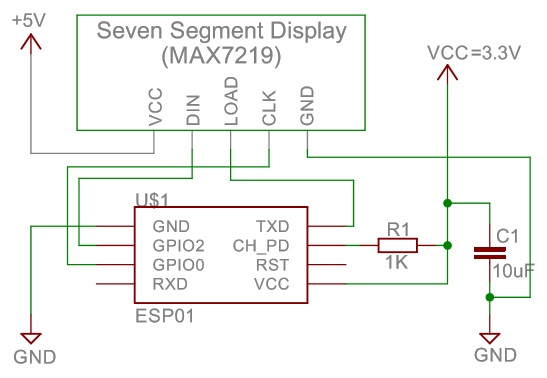

You can’t jump to some code to handle the reset. ESP8266 NodeMCU Get Epoch/Unix Time Example Copy the following code to your Arduino IDE. ESP8266 Interrupts and Timers Arduino IDE PIR Motion Sensor Example In this tutorial, we will learn to use interrupts and timers of ESP8266 NodeMCU using Arduino IDE. The downside is when the timer pops, the system just resets. Example usage to toggle an LED at a fixed frequency: from machine import Timer. It now supports 16 ISR-based timers, while consuming only 1 hardware Timer. By using the callback method, the timer event can call a Python function. This library enables you to use Interrupt from Hardware Timers on an ESP8266-based board. examples/ TimeAlarmExample ESP8266TimeAlarms.cpp ESP8266TimeAlarms.h README.md keywords.txt library.json library.properties README.md TimeAlarms for ESP arduino version 2.4. Unlike Teensy and Arduino, WDT is very easy to use. khoih-prog February 19, 2020, 11:47pm 1 GitHub GitHub - khoih-prog/ESP8266TimerInterrupt: This library enables you to use. These Hardware Timers, using Interrupt, still work even if other functions are blocking. But if you are doing something compute bound that will take more than a second or so, you should manually reset the timer with ESP.wdtFeed() GitHub - khoih-prog/TimerInterruptGeneric: This library enables you to use Interrupt from Hardware Timers on supported Arduino boards such as AVR, ESP8266, ESP32, SAMD, SAM DUE, nRF52, Teensy, etc. While you must pass a timeout value to wdtEnable, it is currently ignored.Īs mentioned before, most of the libraries will automatically reset the WDT for you so you should not have to do so. The SW WDT is enabled with: ESP.wdtEnable(msecs) ExampleESP8266 Timer Example Hardware Timer0 is used by WiFi Functions. If you wish to disable it, the SW WDT is disabled with ESP.wdtDisable() There seems to be little point in disabling the SW WDT as you must reset it to also reset the HW WDT.Īs previously mentioned, the SW WDT is running by default. You can enable/disable the SW WDT, but not the HW WDT. For example, we can use a timer interrupt to toggle the LED after every one second.

The SW WDT seems to reset the MCU at 1.5 about seconds. The HW WDT is always running and will reset the MCU after about 6 seconds if the HW WDT timer is not reset.
Esp8266 timer example software#
There is a hardware WDT and a software WDT. My primary resource for researching ESP8266 WDT was: Most of the library routines reset it so you may never even know it is running unless your program hangs in a loop. Turns out the WDT is enabled automatically for the ESP8266. The ESP8266 is an affordable development board that combines control of outputs/inputs and Wi-Fi capabilities. Timer0 - An 8 bit timer used by Arduino functions delay(), millis() and micros().While messing with an ESP8266 for the past couple of days, I decided I should look into how the watch dog timer operates. NOTE - Timer interrupts may interfere with other functionality (PWM for example) depending on the timer chosen to configure.Ġ (Used by WiFi), 1 is available to configure.Į.g. Only fire when the configured timer overflowsĪre restricted to a small number of timers depending on the MCU hardware in use.Ĭan only set values to variables declared with VOLATILE, which ensures they arent optimized away, and can be used reliably in the ISR and in the main loop() code Timer Example - ESP8266 BASIC Timer Example (3.0 branch only) timer 5000, do.some. Need to be extremely fast to execute, and it is often best to simply set a number of flags or states within the Interrupt Service Routine, then evaluate them when required in your normal thread code in loop().


 0 kommentar(er)
0 kommentar(er)
